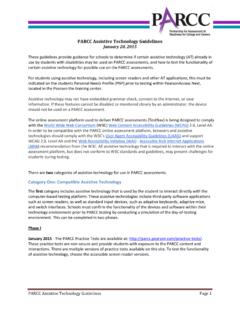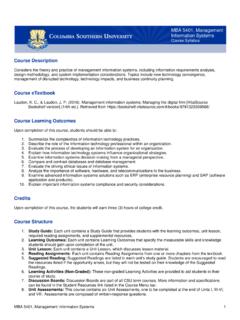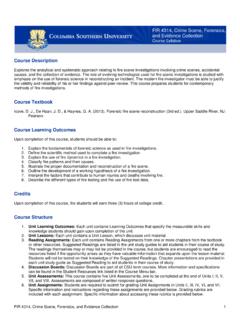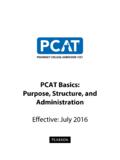Transcription of to Understanding Texas Medicaid Waivers - …
1 DRAFTA Roadmapto UnderstandingTexas Medicaid WaiversIntroductionA Roadmap to Understanding Texas Medicaid Waivers provides basic information with tips on access anduse of Texas Medicaid Waivers . The information pulls from a variety of resources and experts, intended to assista person with a disability or others who provide support to make decisions about getting on the waiver interestlist, choosing between different Waivers and making the most of their waiver Roadmap relies on current information available.
2 Just like the highway system, there is always somethingnew under construction or old roads under repair. Be sure and use your local or state resource people to findout the most current funding amounts, rules or changes that affect the Medicaid waiver that interests who are offered a Medicaid waiver often hear advice to get the most out of your Medicaid waiver. But,how to make that happen is the challenge! Waivers offer opportunity - but it is most effective when the personusing the waiver (or their allies) knows what they want and uses a few tools to get it.
3 A concept embedded inthe program policy and embraced by many in the advocacy and provider community is self-determination. It isnot easy to achieve, but the decisions you make along the way to working through your waiver will make adifference in what you can guiding principles of self-determination ( ) can beused to ensure your Medicaid waiver services are delivered in a way that results in a life that YOU want:Principles of Self-Determination Freedom to choose a meaningful life in the community Authority over a targeted amount of dollars Support to organize resources in ways that are life enhancing andmeaningful to the individual with a disability Responsibility for the wise use of public dollars and recognition of thecontribution individuals with disabilities can make to their communities Confirmation of the important leadership role that individuals withdisabilities and their families must play in a
4 Newly re-designed system andsupport for the self-advocacy movementThe Roadmap combines the principles of self-determination with the rules and guidelines of the Medicaidwaivers to give you a chance of getting to where you want to go with your life. Like taking a trip, if youdetermine your destination (Freedom), you are more successful getting to where you want to go in your life ifyou plan well for making decisions (Authority), use your financial resources (Responsibility), get the assistanceyou need when you need it (Support), and you remain central in making all the decisions that affect you(Confirmation).
5 Creation of The Roadmap is made possible through funding from the Texas Council for Developmental Disabilitiesso that more people with disabilities have access to more information to make better Roadmap, Page 2 The BasicsMedicaid and EntitlementEstablished in 1965, Medicaid provides medical health coverage for low-income individuals and families who fitinto an eligibility group that is recognized by federal and state law. Eligibility Groups may include your age,whether you are pregnant, disabled, blind, or aged; your income and resources (like bank accounts, real property,or other items that can be sold for cash); and whether you are a citizen or a lawfully admitted has its own guidelines regarding eligibility and services defined in the Texas Medicaid State Medicaid coverage pays for health care, such as doctor s visits, hospitalizations and medication.
6 Medicaidalso pays for durable medical equipment and supplies such as wheelchairs and augmentative communicationdevices. Some people may (or may not) also receive cash assistance from the Temporary Assistance for NeedyFamilies (TANF) program or from the Supplemental Security Income (SSI) program. Persons who qualify forMedicaid based on disability and income are entitled to basic services. Entitlement means there is no wait for people with disabilities and seniors, Medicaid is also a major funding stream of Long-Term Care.
7 Historically, Medicaid covers the expenses of institutional and nursing facility care, called Intermediate Care Facilities (ICF).The ICF service model and criteria for placement uses traditional assessments for medical and psychiatricdiagnosis. ICF facilities can be as small as six people living in a home, or as large as 600 people in a facility orinstitution. ICF services are an entitlement for eligible in medical, educational and habilitation services for seniors as well as children and adults withdisabilities, makes it possible for more people to stay in their own home or in a small, personalized livingarrangement in a typical community.
8 Medicaid Long-Term Care now includes a waiver called Home andCommunity-Based Services . This waives the institutional (ICF) rules to create community services andsupports more than the basic health care in the Medicaid State Plan but not a traditional ICF facility. Waiverservices are not an to Apply for Basic Medicaid ServicesEven if you are not sure whether you qualify, if you or someone in your family needs health care, you shouldapply for Medicaid and have a qualified caseworker evaluate your 2-1-1: It s a free, easy-to-remember phone number connecting callers with health and human services intheir area.
9 Knowledgeable staff will speak with you and answer your questions. You can call for assistance sevendays a week, 24 hours a : If you are calling from outside of Texas , or have technical difficulties when dialing from your cell phone,voice-over-IP, or office location, then please dial the alternate access number at 1-877-541-7905. You can alsovisit the 2-1-1 Texas website at to find the phone number to your local 2-1-1 AreaInformation out an application - The first page of the application includes instructions about mailing or faxing yourcompleted application in English or Espa a HHSC Benefits Office - Call 2-1-1 or visit the site to findthe HHSC benefits office closest to is a Medicaid Waiver?
10 A Medicaid waiver allows the state to be more flexible in how it spends money to provide some long-termservices to some people with disabilities or elderly citizens who are eligible for Medicaid . In the past, people hadto be in nursing homes/facilities or other large institutions for Medicaid to pay for long-term Roadmap, Page 3 Waivers override certain rules for how Medicaid funding can be used. If they meet the eligibility requirements,people can get the services they need in their own homes or other community settings, instead of having to gointo a nursing facility or Texas , there are several different waiver programs that offer a broad range of home and community-basedservices to people with disabilities and elderly citizens.





